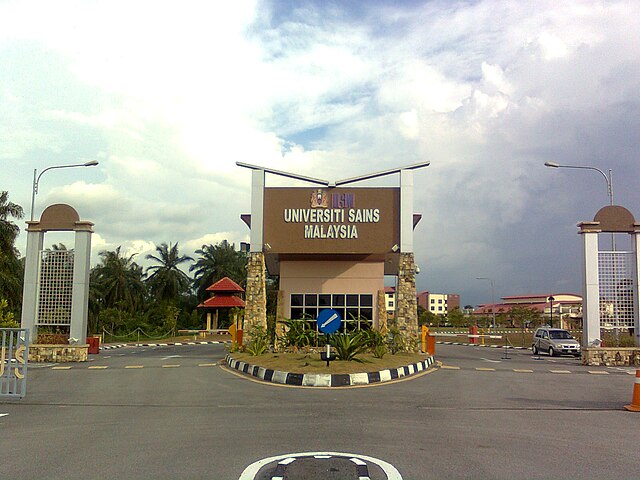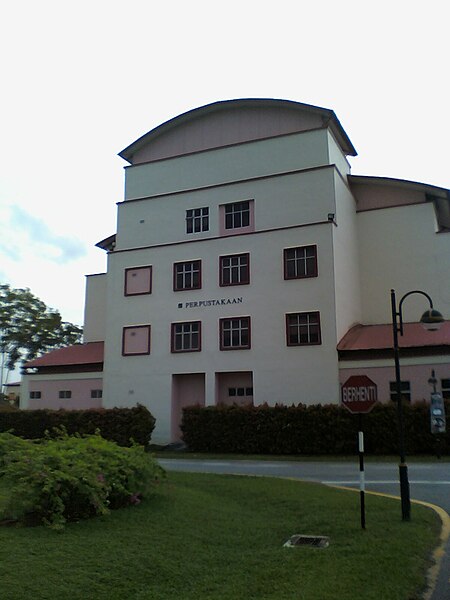
On March 22, the Pridi Banomyong Library welcomed a group of visitors from the Centre for Instructional Technology & Multimedia, Universiti Sains Malaysia. (PTPM@CITM). The group was led by Associate Professor Wan Ahmad Jaafar Bin Wan Yahaya, Ph.D., Director of PTPM@CITM.
Universiti Sains Malaysia (USM) is a public research university located in Penang, Malaysia. Its motto in English is We Lead. In June, USM will celebrate the fiftieth anniversary of its founding. It has over two thousand academic staff and more than 24,000 students. USM plans to open a Global Campus located at Kuala Lumpur Education City (KLCE). Thammasat University and USM are both participants in the ASEAN International Mobility for Students (AIMS) programme, to encourage student mobility in all Southeast Asia Ministers of Education Organization (SEAMEO) member countries.
According to its website, CITM@PTPM has four main functions:
- To promote the use of instructional technology in teaching and learning in the University and country.
- To provide the theoretical and practical experience for students at both undergraduate and graduate level on the research, design, development and use of educational media.
- To provide the community with the expertise in the design and development of communications and multimedia programs.
- To provide services to the university in terms of advising and giving appropriate information on the design & development of audio-visual and multimedia system and providing the technical specifications for the procurement of these equipment.
The mission of CITM@PTPM is
to promote research and development encompassing the domains of instructional technology to support innovative, effective, and meaningful applications of technology in teaching and learning.
Associate Professor Wan has worked on many educational research projects. These include subjects as gamification in education. Gamification means to apply elements of game playing such as point scoring, competition, and rules of play, to other areas of activity. Associate Professor Wan has also worked on persuasive multimedia learning environments; emotional design in multimedia learning; tangible multimedia system for preschoolers; virtual reality towards student achievement; digital coaching in learning through multimedia; and interactive multimeda learning awareness.
One article coauthored by Associate Professor Wan is Exploring the effects of visual aesthetics in e-learning for engineering students. It was published in September 2018. The abstract states:
e-Learning is changing the way students learn in the classroom. However, one of the least emphasised aspect in e-learning design concerns with aesthetics. Recent research in multimedia aesthetics highlighted the need to understand interaction from a multidisciplinary perspective. Aesthetics research in e-learning usually focuses on exploring the effects of positive aesthetics design towards neutral designs and a gap in exploring the effects of negative aesthetics. In this study, two different designs were developed to reflect positive and negative aesthetics designs. The cognitive outcome of these designs was compared and evaluated based on a learning achievement to measure comprehension. Gender and academic achievement were also explored to investigate if these factors had an effect on aesthetics perception and learning achievement. Based on the outcome of 95 electronic engineering students from two different polytechnics in Malaysia, it was found that engineering students performed better in the negative design in comparison to the positive design. In addition, genders or academic achievement differences were found not to influence the outcome.

Another coauthored article from August 2018 is Enhancing Primary School Students’ Knowledge and Awareness of Obesity Risk: Integrating Multimedia Design Principles in Designing Application of Persuasive Multimedia.
Its abstract indicates:
This paper is highlighting on increasing knowledge and awareness of obesity risk among primary school students in Malaysia by integrating multimedia design principles as a design strategy in designing and developing a persuasive multimedia application (PerMOss). Preliminary investigation shows that school students’ knowledge and awareness about obesity risk are still low, and they are not aware of the adverse effects of obese. In such situation, they need to be educated and made aware of by increasing their knowledge and awareness of obesity risk. In such a situation, with the advantages of current persuasive multimedia technologies, learning can be supported by the effective multimedia application. Accordingly, this study develops a learning application by adapting an instructional design model for design and development by Alessi and Trollip. Then, with the help of experts in the field of food technology and multimedia design, alpha and beta testing were conducted to prove that the content, as well as the design, were valid. The result from the pilot testing revealed that the advantages of multimedia technology could facilitate students in better understanding of obesity risk and improve their awareness of the issues.
More of Associate Professor Wan’s coauthored research may be read on the Researchgate website. The titles of article include:
The Preliminary Study of a Mobile Health Application for Visual Impaired Individuals;
The Effects of Personalized Multimedia App on Knowledge and Perceived Awareness of Cyber-Bullying Among Adolescents;
Integrating Segmenting Principles into Text and Video Elements of an Educational App;
Designing A Learning Engagement Model of Malaysian Digital Traditional Games;
Graspable Multimedia: A Study of the Effect of a Multimedia System Embodied with Physical Artefacts on Working Memory Capacity of Preschoolers;
Exploring How Emotional Intelligence and Academic Achievement Influuences E-Learning Achievement: A Case Study in Malaysian Polytechnics;
Spatiality in Multimedia Landscape: An Investigation into the Dimension That Defines the Innate Learning Nature of Preschoolers;
Physical Multimedia: Strategic Ways to Attract Children’s Focus in Multimedia Learning;
Virtual Science Laboratory (ViSLab): The Effects of Visual Signalling Principles towards Students with Different Spatial Ability;
Integrating Hybrid Digital Coaching (Hdc) in Learning Through Multimedia to Improve Students’ Performance Standard;
The Effects of Problem-Based Learning Strategies and Learning Style on Students’ Achievement and Retention in a Social Network Environment;
Framing Foundational Taxonomy of Multimedia Tangibility in Education Setting for Children; Complementing Multimedia with Tangible Objects as a Way to Stimulate Preschoolers’ Motivation in Learning;
Designing a Working Memory Capacity Test for Cognitive-Friendly Tangible Multimedia;
A Glimpse of Malaysian Teachers’ Reading Intervention Strategies for Children with Dyslexia;
Emotional Design in Multimedia Learning: How Emotional Intelligence Moderates Learning Outcomes;
Mobile-assisted second language learning: Speaking a second language with auditory stimuli;
Enhancing Students Performance Standard in the Information and Communication Technology Subject Using Multimedia Learning Courseware: Designing a Theoretical Framework;
Virtual Science Laboratory (ViSLab): A Pilot Study on Signaling Principles towards Science Laboratory Safety Training;
Reducing susceptibility to smoking among school adolescents: an initial investigation towards the development of Persuasive Smoking Prevention Intervention (PSPI);
Multimedia design principles in developing multimedia learning application (MMLA) to increase children’s awareness of child sexual abuse;
The Acceptance of Webinars as a Training tool among Engineers;
The Emotional Effect of Multimedia Induced Emotions on E-Learning Among Polytechnic Students.

(All images courtesy of Wikimedia Commons)
